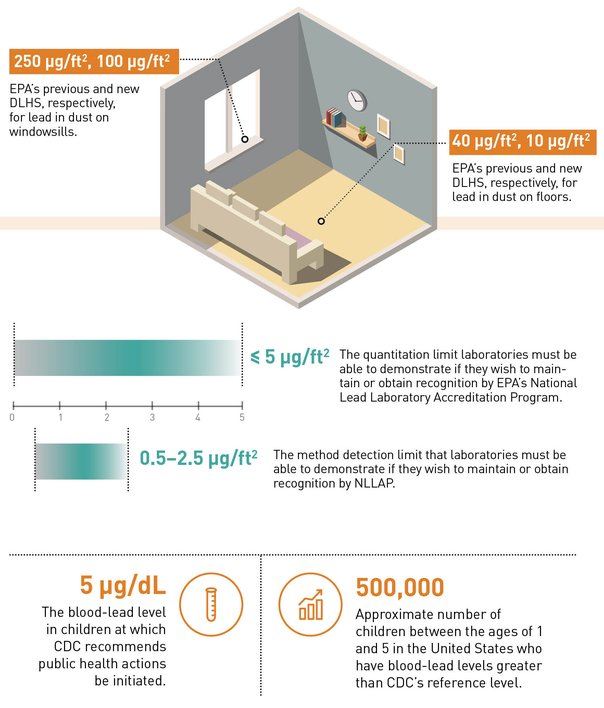DEPARTMENTS
BY THE NUMBERS
A Final Rule for Lead in Dust
In June, EPA announced a new final rule that will revise the federal limits for lead in dust on floors and windowsills in houses built before 1978 and in child-care facilities. The agency’s tighter dust-lead hazard standards (DLHS), which go into effect on Jan. 6, 2020, are intended to protect children from the harmful effects of lead exposure. The text of EPA’s final rule indicates that in finalizing the new limits, the agency considered the achievability of the new standards in relation to their application in lead risk reduction programs, whether lower dust-lead loadings can be reliably detected by laboratories, and the availability of resources for addressing lead-based paint hazards. Information from the final rule and related sources appears below.
From “Review of the Dust-Lead Hazard Standards and the Definition of Lead-Based Paint”:
“Infants and young children can be more highly exposed to lead through floor dust at home and in child-care facilities because they often put their hands and other objects that can have lead from dust or soil on them into their mouths.”
SOURCE
CDC: “Lead.”
Federal Register: “Review of the Dust-Lead Hazard Standards and the Definition of Lead-Based Paint; Final Rule.”

Tap on the graphic to open a larger version in your browser.
In August, The Knoxville News Sentinel reported that a student intern and a researcher at Oak Ridge Associated Universities had devised an experiment to replicate the McCluskey incident in order to study the effects of radiation on the body. By irradiating vials of their own blood for different lengths of time, the researchers hope to generate data that clinicians and first responders can refer to following an exposure incident.
Read more from the News Sentinel.

